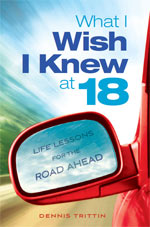How I Wrote the Book
1/9/2011 4:15:36 PM

When I initially developed my list of 100 life success pointers, I had no idea this was a book in the making. I simply went about considering every aspect of life that graduates either are unaware of or that are far more important than they can realize. I reflected on my personal mistakes and regrets and on the qualities and methods of the most successful people I knew. I chose not to write about the obvious (eat right, exercise, rest…), preferring to focus on lessons that come with experience and observation. I deliberately chose subjects that young adults would face in the near term (college transition) as well as issues they’ll face down the road (marriage). My goal was to reach kids before they face these important life decisions.
After brainstorming this initial list (and sharing it with my advisory team for feedback) I categorized them into themes or subjects. Most were easily slotted into various buckets, but some were more isolated in nature. These latter success pointers would comprise my “Miscellaneous” chapter while the other categories would represent thematic chapters.
Once the chapters were determined, my next step was to ensure that I “covered the bases” with the success pointers in each chapter. This led to some additional pointers in a few chapters.
The final aspect of the structuring of the book involved subject matter flow. I had ten diverse chapters that needed to be sequenced in some logical manner. This is why the first half of the book is more deep and reflective (life perspective, character, relationships, spiritual life and handling adversity) while the second half is more topical and life decision oriented (academics, career, love and marriage, and finances).
Now that I had the basic structure of the book designed, my next step was to write it! To that end, I simply prayed and reflected on the content that would most effectively reach my audience for each particular success pointer. In some cases that led to personal experiences or observations that would serve as illustrations. In other cases, it led to instructional methods of how to go about implementing a particular pointer.
Once my initial manuscript was written, my editor, Arlyn Lawrence, offered the excellent suggestion of ending each section with a list of reflective questions before readers proceeded to the next pointer. These will help form the basis of the leader and student guides we are developing for use in educational, small group, and workshop settings.
Writing this book was a deeply reflective experience for me as I scoured my life for relevant wisdom to share. It was incredibly gratifying because many of my life experiences (some of which were hard!) had new meaning—they could now be used to illustrate key life lessons for generations of kids and parents. What a wonderful, unintended pleasure of writing this book!